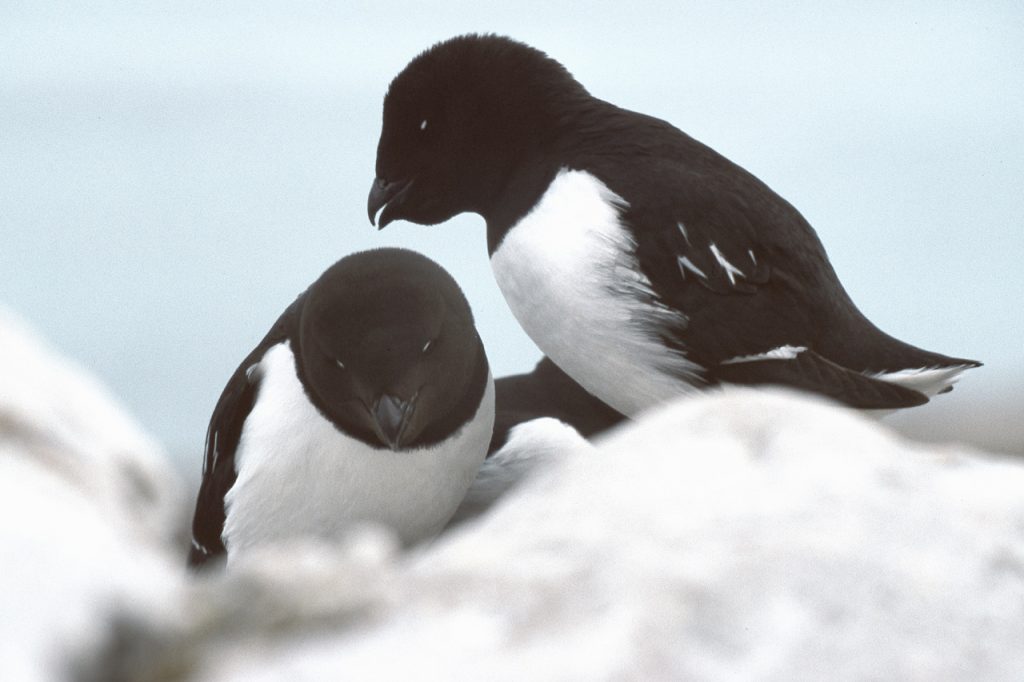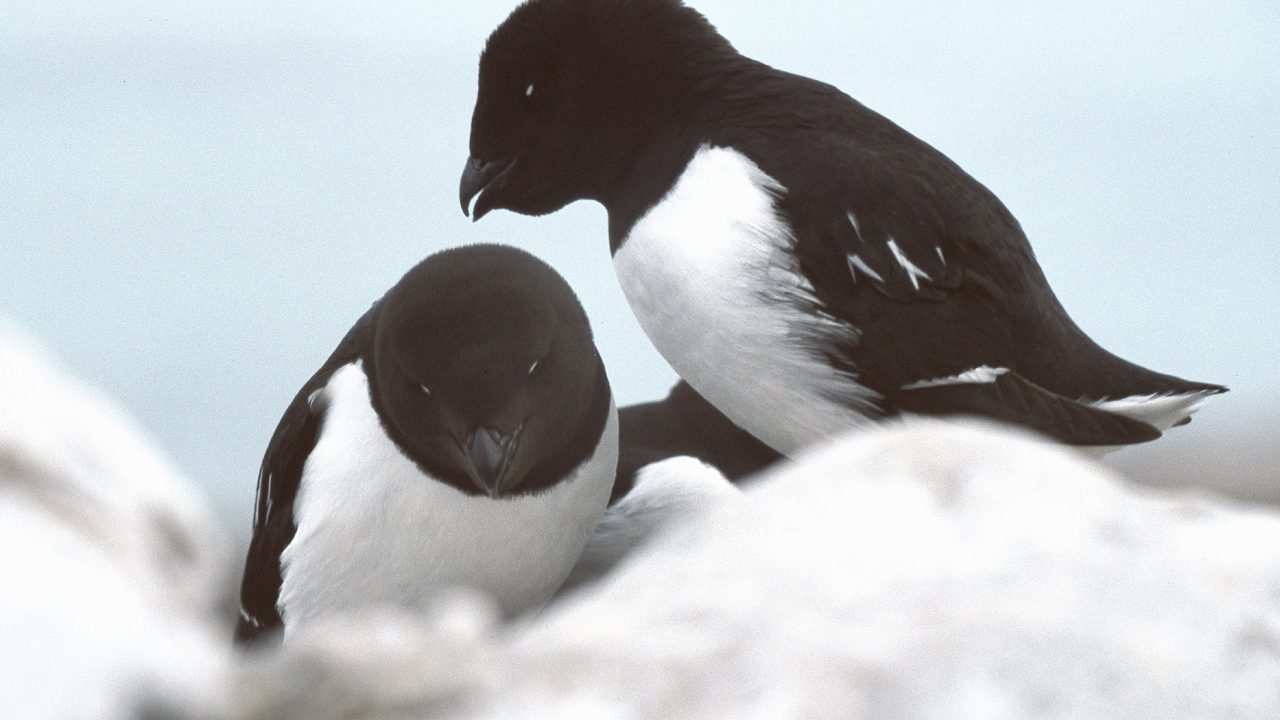For the Door 18 of our advent calendar, we are traveling to Svalbard to meet a tiny Arctic bird, the little auk Alle alle. The composition of its diet is currently used by scientists to monitor the pace of climate change in the Arctic.

Little auks are planktivorous, meaning they feed on zooplankton, and what better zooplankton to feed on than Calanus! If you have read any of my previous posts, you may already know that Calanus are key zooplankton for marine ecosystems, being the main source of food for many organisms including fish, marine mammals and birds and other marine invertebrates. What makes them such an attractive source of food is their extreme richness in high-energy content lipids. To benefit from this great source of energy, little auks have developed their foraging strategy to feed selectively and exclusively on Calanus species.
But in the Arctic, not all Calanus are created equal. Calanus hyperboreus grow bigger than the coastal C. glacialis, and represent an even greater source of energy-rich lipids for the little auks. However, C. hyperboreus are less accessible for the little auks because they live far from the coasts, in open ocean environments of the high-Arctic. To feed on them, the little auks need to make quite the journey, flying from their colonies on Svalbard to the open Arctic Ocean. When they are nesting, they can’t afford to be away from the nest for too long or too often. So, on a daily basis the little auks will rather forage for food closer to their nest, targeting C. glacialis, but once in a while they will make the trip further away to bring back the more nutritious C. hyperboreus for their chicks, as a nice energy boost to their diet.
But this brilliant adaptive strategy is put at risk by climate change which is more strongly felt in the Arctic than anywhere else. A phenomenon raising concerns is the Atlantification of the Arctic, as Atlantic species slowly but surely move northwards in response to ocean warming and influence Arctic ecosystems. In particular, the migration of C. finmarchicus, the dominating zooplankton of the North Atlantic, towards the Arctic is closely monitored. If it replaces C. glacialis, as some scientists suggest, the consequences could be severe for the little auks, because C. finmarchicus are smaller and offer less energy-rich lipids. Hence, the effort spent by little auks to catch C. finmarchicus may not be paid off by the amount of energy contained in these smaller crustaceans.
In the Arctic, scientists gauge the Atlantification process by examining changes in the zooplankton community, especially variations in Calanus species proportions within the little auks’ diet. Increasing proportions of C. finmarchicus have been reported in the little auks’ diet compared to C. glacialis, alarming on the rapid Atlantification. However, until recently, discrimination between Calanus species was based on their body length, and my own research demonstrated, in fact, the unreliability of this method. A reevaluation of little auk diets, based on reliable genetic identification of Calanus species surprisingly revealed that despite the presence of C. finmarchicus in their foraging areas, little auks in fact still consume nearly exclusively C. glacialis. Simply, an important portion of the C. glacialis are of smaller size, possibly as a response to climate change, and had therefore been previously mistaken as C. finmarchicus. Hence, by misidentifying species composing the diet of little auks, used as an indicator of climate change, scientists had likely overestimated the pace of Atlantification of the Arctic altogether.
Although it is a fact that there are more and more C. finmarchicus in the Arctic, the diet of little auks does not seem to be affected. We expect that the scale of the northern expansion of boreal C. finmarchicus may have been largely overestimated and that higher costs for birds exposed to Atlantification could be mostly driven by a decrease in the size of C. glacialis rather than by a shift from C. glacialis to C. finmarchicus.
Source: our recent research paper published in Scientific Reports: Balazy et al. 2023, Molecular tools prove little auks from Svalbard are extremely selective for Calanus glacialis even when exposed to Atlantification. https://doi.org/10.1038/s41598-023-40131-7
![]()
